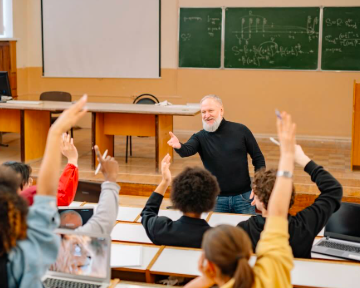Learning from home is now more accessible than ever. Whether you’re a student, parent, or lifelong learner, the internet offers countless ways to find high-quality educational content—without spending a fortune or risking unreliable sources. Here’s how to find the best learning materials right from your living room.
1. Use Reputable Educational Platforms
Websites like Khan Academy, Coursera, and edX provide access to well-organized lessons created by educators and universities. These platforms offer courses in subjects ranging from math and science to art and history—many of them free.
2. Tap into Public Libraries Online
Many public libraries now provide free access to digital textbooks, academic journals, and e-learning tools. Services like OverDrive and Libby allow library members to borrow eBooks and audiobooks directly to their devices.
3. Explore Open Educational Resources (OER)
OER platforms host free teaching and learning materials licensed for public use. Sites like OER Commons and OpenStax let you access textbooks, lesson plans, and activities without cost. These resources are especially useful for homeschooling and supplementary learning.
4. Download Educational Apps
Apps like Duolingo (languages), Photomath (math help), and BrainPOP (variety of K–12 subjects) offer interactive ways to study. Many include both free and premium versions—so you can start learning without upfront fees.
5. Follow Educational YouTube Channels
YouTube isn’t just for entertainment—it’s also a great place to find subject-specific learning. Channels such as CrashCourse, National Geographic Education, and TED-Ed offer high-quality videos that make complex topics engaging and easier to understand.
6. Check for School and Teacher Recommendations
Your school or instructor may provide a curated list of trusted digital resources. This often includes direct links to lesson plans, PDF materials, or access codes for subscription services provided by your school district.
7. Join Online Learning Communities
Websites like Reddit (e.g., r/learnprogramming or r/AskAcademia) and Discord study groups can connect you with fellow learners and educators. While they shouldn’t replace verified materials, these communities can guide you to useful tools and offer peer support.
8. Prioritize Safe and Ad-Free Content for Younger Learners
For younger students, look for platforms with child-safe modes or ad-free experiences, such as PBS Kids, National Geographic Kids, or ABCmouse (free trials often available). These help ensure both quality and safety.
Final Tip:
Stay consistent and verify sources. Just because something is online doesn’t mean it’s accurate. Look for resources affiliated with educational institutions, non-profits, or respected publishers.






